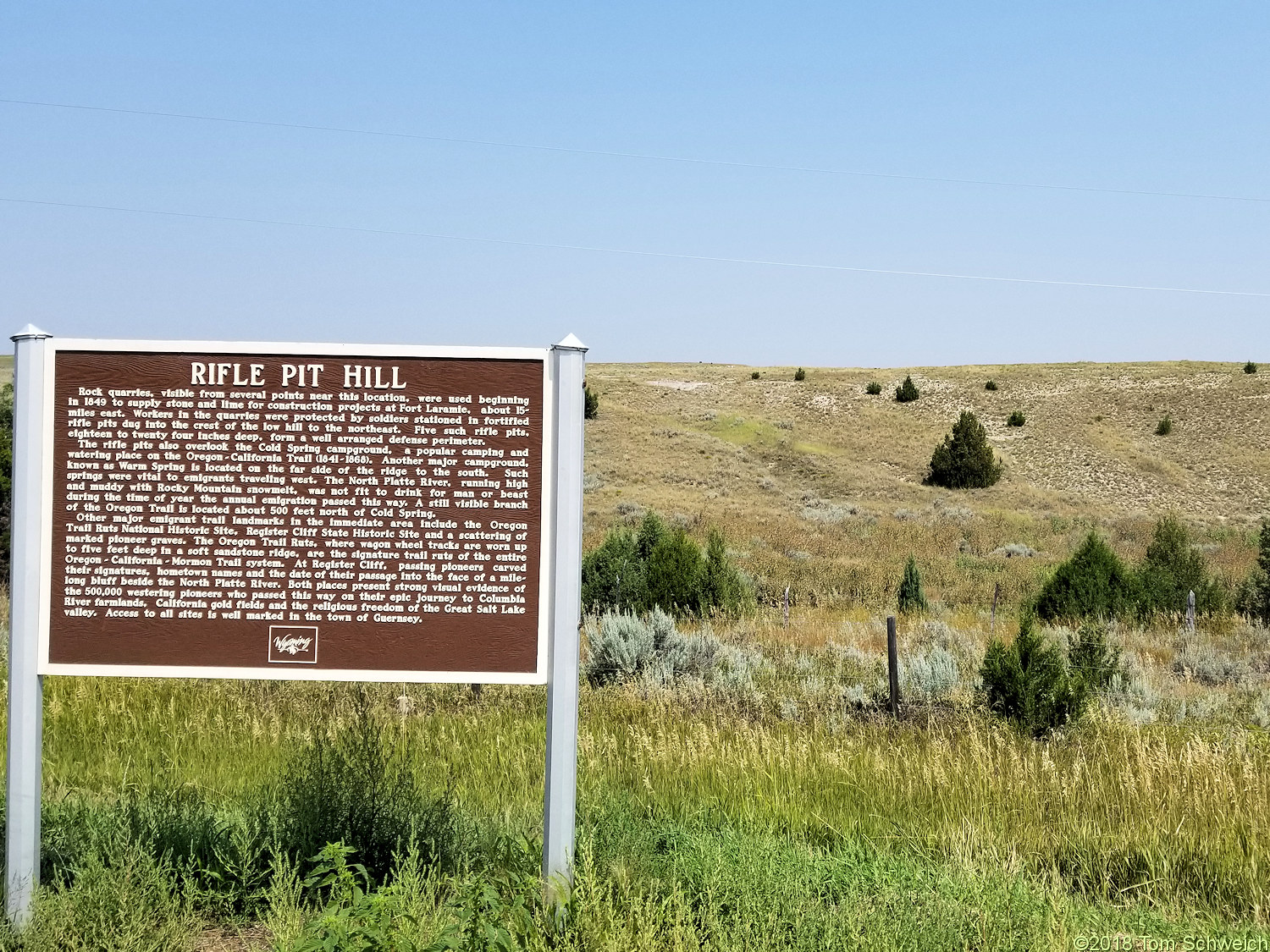Rifle Pit Hill
Rock quarries,
visible from several points near this location,
were used beginning in 1849
to supply stone and lime for construction
projects at Fort Laramie,
about 15 miles east.
Workers in the quarries were protected by soldiers
stationed in fortified rifle pits dug into the crest of the low hill to the northeast.
Five such rifle pits,
eighteen to twenty four inches deep,
form a well arranged defense perimeter.
The rifle pits also overlook the Cold Spring campground,
a popular camping and watering place
on the Oregon-California Trail (1841-1868).
Another major campground,
known as Warm Spring is located on the far side of the
ridge to the south.
Such springs were vital to emigrants traveling west.
The North Platte River,
running high and muddy with Rocky Mountain snowmelt,
was not fit to drink for man or beast
during the time of year the
annual migration passed this way.
A still visible branch of the Oregon Trail
is located about 500 feet north of Cold Spring.
Other major emigrant trail landmarks in the immediate area
include the Oregon Trail Ruts National Historic Site,
Register Cliff State Historic site,
and a scattering of marked pioneer graves.
The Oregon Trail Ruts,
where wagon wheel tracks are worn up to five feet deep
in a soft sandstone ridge,
are the signature trail ruts of the entire
Oregon - California - Mormon Trail system.
At Register Cliff,
passing pioneers carved their signatures,
hometown names and the date of their passage
into the face of a mile-long bluff beside the North Platte River.
Both places present strong visual evidence
of the 500,000 westering pioneers
who passed this way on their epic journey
to Columbia River farmlands,
California gold fields, and the religious freedom
of the Great Salt Lake valley.
Access to all sites is well marked in the
town of Guernsey.
|
 Eastern Mojave Vegetation
Eastern Mojave Vegetation
 Eastern Mojave Vegetation
Eastern Mojave Vegetation

